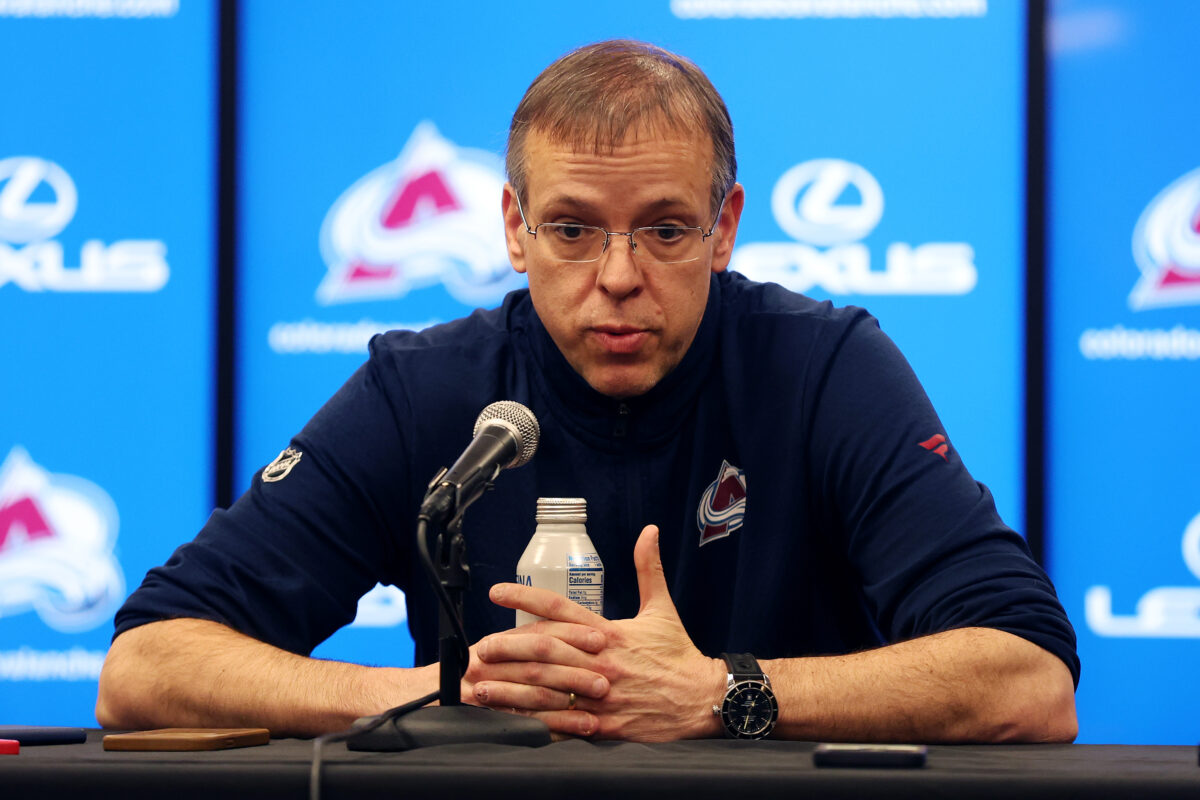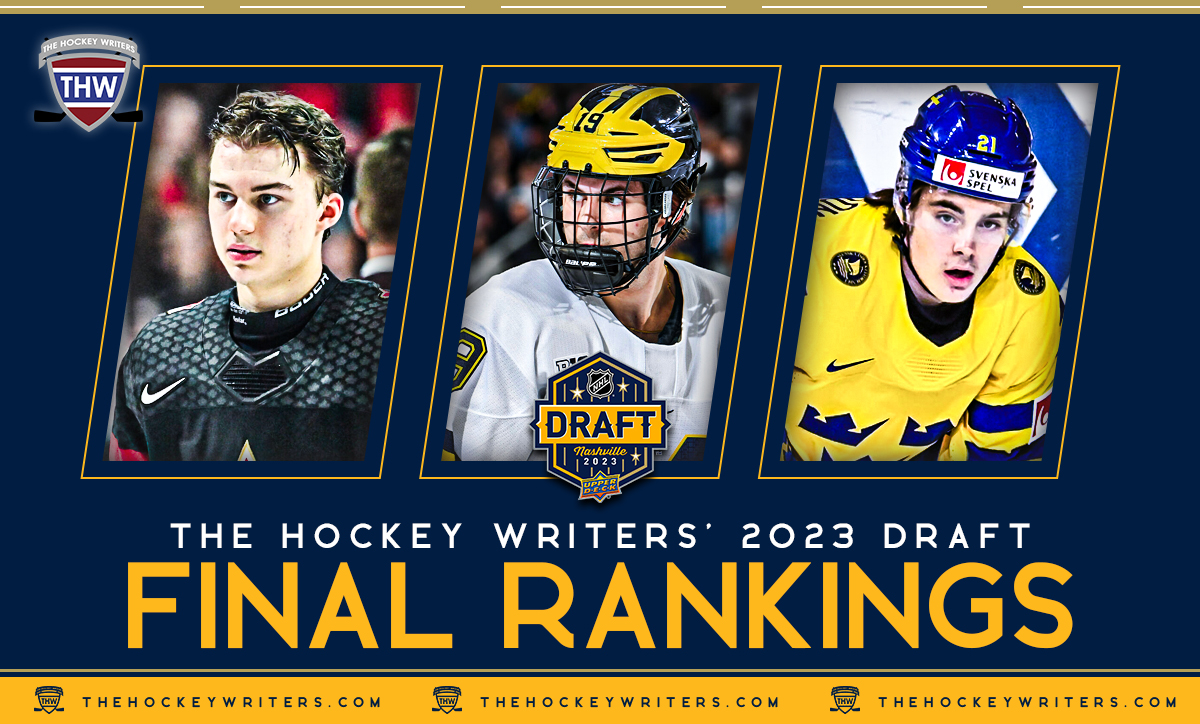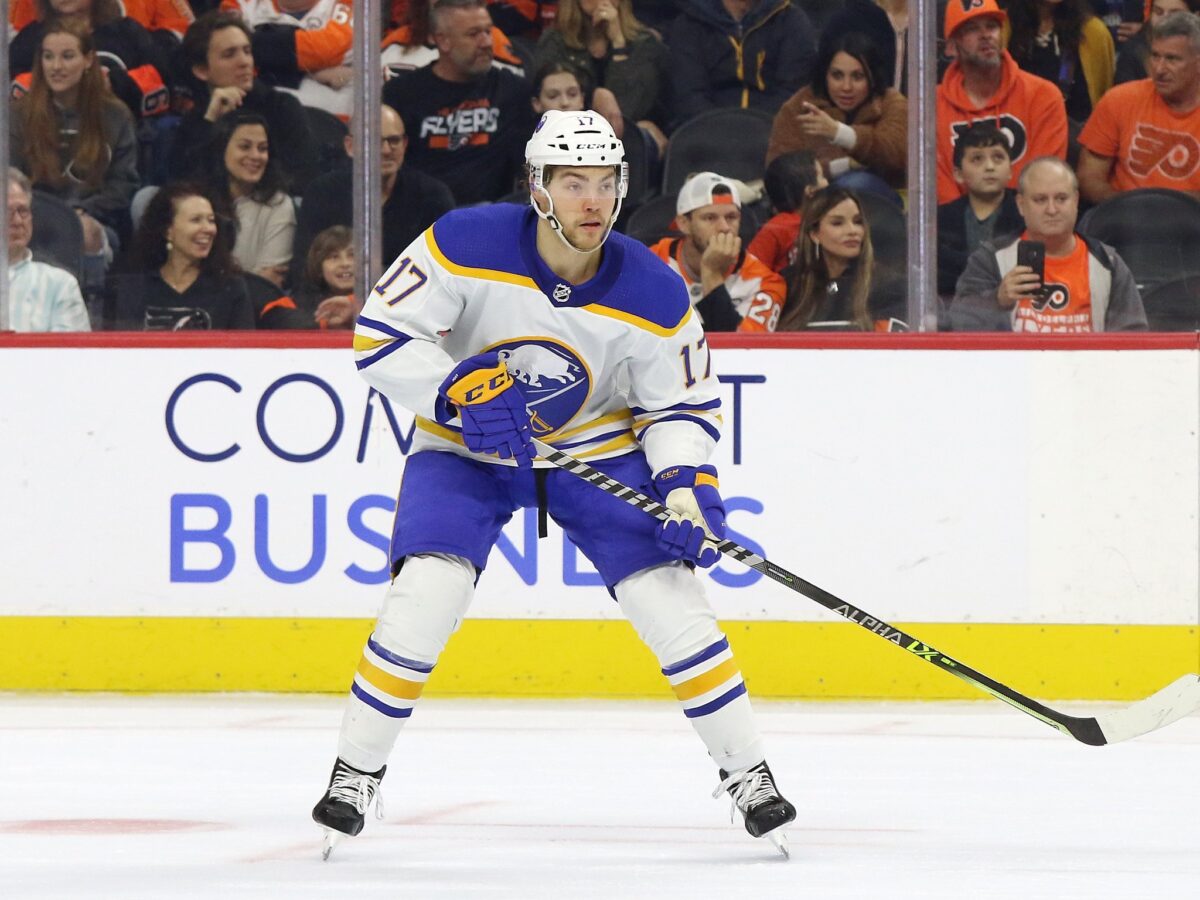The Colorado Avalanche find themselves at a crossroads. With their star players either near or already firmly in their prime, the next few seasons present the team with the best opportunity to challenge for multiple Stanley Cups. In light of this contention window, they should consider trading their 2023 first-round draft pick (27th overall) for an established NHL player capable of immediately contributing to their title chase.
Related: 5 Avalanche 2023 NHL Draft Targets with First-Round Pick
The Avalanche’s age profile, the typical developmental timeline of a late first-round pick, the organization’s subpar track record of drafting outside of the lottery, and the unpredictability of the NHL in general all contribute to this sentiment. With this core’s legacy on the line, let’s dive further into why the Avalanche should trade their first-round pick in the 2023 NHL Entry Draft.
Avalanche Stars Currently in Their Prime
The most significant factor weighing into the Avalanche’s decision should be the age profile of their key players. Most of their stars are at or near their prime years of production according to research on aging curves, with a player’s peak typically coming in their early 20s, rather than later which used to be the prevailing thought.
Nathan MacKinnon, widely regarded as one of the NHL’s most electrifying players, has consistently been a driving force behind the team’s success since immediately stepping into the league as an 18-year-old rookie. The superstar center is coming off his best individual season in the NHL, setting career-highs in goals (42), assists (69), and points (111) in 71 appearances.
Yet, MacKinnon turns 28 in September and will be closer to his age-35 season than his age-20 campaign at the start of training camp. There’s little doubt that he can maintain his level of production into his mid-30s, but each additional year brings a greater risk of physical and statistical decline.

Mikko Rantanen, the Avalanche’s best goalscorer, is also coming off the best statistical campaign of his career, setting new benchmarks in goals (55) and points (105) while playing in every game last season. The Finnish winger turns 27 at the end of October, also placing him at the peak of his powers.
Future Hall-of-Fame defenseman Cale Makar is the final member of Colorado’s key triumvirate, with the dynamic blueliner turning 25 one day after Rantanen turns 27. He’s the youngest of the three superstars but even he will be closer to age 30 than age 20 at the start of next season.
Of the other key players currently under contract through 2023-24, Ryan Johansen (31), Devon Toews (29), Valeri Nichushkin (28), Artturi Lehkonen (28), and Alex Georgiev (27) will all be 27 or older at the start of the season. Players like Samuel Girard (25), Bowen Byram (22), and Alex Newhook (22) provide a lifeline to the future, but the Avalanche’s competitive timeline runs through the superstars.
Assuming captain Gabriel Landeskog returns for the 2024-25 season, he will be a month away from turning 32 and will have missed two years of play. It’s unfair to expect him to be the same player after such a lengthy layoff, so he shouldn’t be penciled in to replicate his previous deployment, usage, and production.
You May Also Like:
- Avalanche Continue to Have Hellebuyck’s Number in Game 3 Win
- Avalanche Bury Jets 6-2 in Game 3, Snatch 2-1 Series Lead
- Projected Lineups for the Jets vs Avalanche – Game 3
- Winnipeg Jets’ Keys to Success in Games 3 and 4
- Jets’ Goaltending Advantage Against Avalanche Hasn’t Materialized
With their key players in or approaching their prime, the Avalanche have a limited window of opportunity to surround them with a championship-caliber supporting cast. Every passing season sees them step one year closer towards an inevitable decline and a greater likelihood that they provide less surplus value on their massive contracts. This makes it imperative for the team to seize the moment and maximize their short-term chances of winning one or more Stanley Cups.
Aging concerns about players not yet 30 may seem hyperbolic, but time flies in the world of sports. Colorado’s front office has demonstrated the ability to find creative solutions to issues pertaining to roster-building, but Father Time comes for all, and ignoring that fact would be quite the display of arrogance.
Late First-Round Draft Picks Provide Little Immediate Impact
While the chance of selecting a promising prospect in the first round is appealing for an organization with one of the shallowest prospect pools in the league, the reality is that players chosen in this range often require additional development time before making a significant impact at the NHL level. The transition from junior or college is a significant jump, and prospects often need time to adjust to the increased speed, physicality, and skill level of the professional game.
If the Avalanche were picking in the top three where the likes of Connor Bedard, Adam Fantilli, and Leo Carlsson could potentially slot into the NHL lineup from day one, this would be a different discussion. Very few players selected beyond the first half of the first round immediately contribute at the NHL level, meaning a late first-round pick holds much less value to the Avalanche and their fortunes in the 2023-24, 2024-25, or 2025-26 seasons.

By trading for an established NHL player, the Avalanche can bypass this developmental phase and infuse their lineup with a seasoned professional who has already proven their ability to excel at the highest level. Though Colorado’s recent trade for Johansen bolsters their top-six forward group, the team could use another top-six caliber winger to push the likes of Newhook, J.T. Compher, or Evan Rodrigues (if any of the three return next season) into bottom-six roles better suited for their skill sets.
Even while navigating an injury-riddled 2022-23 campaign, the Avalanche managed to win the Central Division and were only two points shy of the Vegas Golden Knights for the regular-season Western Conference crown. It’s fair to assume that with more fortune in the health department and using Landeskog’s cap hit to find a replacement, the team should be considered one of the frontrunners for the 2024 Stanley Cup. After all, the betting markets seem to agree.
Avalanche Have Poor First-Round Draft History
When assessing the Avalanche’s drafting history in the first round outside the top 10, there is a noticeable trend of limited success spanning a decade. While the team’s scouting staff has unearthed gems in later rounds, their track record in the mid-to-late first round is concerning. Several past selections either fell short of lofty expectations or failed to make an impact at the NHL level entirely.
Tyson Jost (10th overall), Martin Kaut (16th), and Conner Bleackley (23rd) are the three most poignant examples of the Avalanche’s shoddy drafting history outside of the top lottery selections.
Related: Avalanche Use Draft as Time to Trade
To date, Jost’s 26 points in the 2018-19 season remains his highest single-season output and he’s now a member of the Buffalo Sabres, his third NHL organization before the age of 25.
Despite producing fairly well in the American Hockey League (AHL), Kaut struggled to carve out a regular NHL role with the Avalanche. He managed only six points in 47 games with Colorado before being traded to the San Jose Sharks this past season where he stands a better chance of becoming a full-time NHL forward.
Bleackley is easily the Avalanche’s biggest first-round disappointment seeing as he’s no longer with the organization and has yet to make his NHL debut at the age of 27. He’s played exclusively in the ECHL for the past three seasons.

Newhook (16th), Justin Barron (25th – later traded to the Anaheim Ducks), and Oskar Olausson (28th) are three players also picked outside of the top 10. Though promising, none have yet to provide the kind of impact at the NHL level that the Avalanche need next season. Newhook is the leading candidate to enjoy a breakout 2023-24 campaign, but even that would come in his third full NHL season and he may not do so as the top-six forward he was projected to be.
By acknowledging their drafting history and potential limitations in identifying and developing talent in that range, the Avalanche can mitigate the risk of another underwhelming first-round selection at a crucial time for the franchise. Opting to package the pick for established NHL talent offers more to the Avalanche’s Cup chances now than it would two to three years from now, even if it means the prospect pipeline may dry out sooner than they would hope.
Avalanche Must Maximize Stanley Cup Odds
The Avalanche face a critical juncture in their pursuit of Stanley Cup glory. In a competitive NHL landscape defined by parity, legitimate opportunities to contend for the Stanley Cup are rare and fleeting. The unpredictability of injuries, free agency, and other factors mean that a team’s championship window can close sooner than previously anticipated.
The Avalanche understand the importance of capitalizing on such fleeting opportunities. They auctioned off a number of draft picks and prospects in the process of winning the third-most playoff games since 2018, as well as capturing the 2022 Stanley Cup.
By trading their 2023 first-round pick, they can solidify their roster and increase their odds of adding at least one more championship during their star players’ prime years and prioritize short-term gains over long-term pain. As the saying goes, flags fly forever.